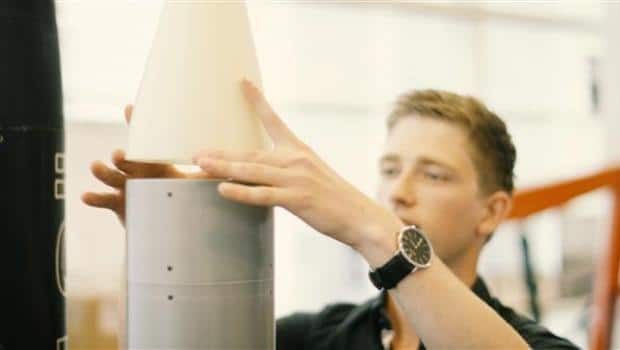3D printing is being used to construct engines, rockets, and several other components. Owing to the complexities involved in rocket manufacturing, traditional methods are used to support additive manufacturing. Students at Inholland University of Applied Science in the Netherlands have started work on an entirely 3D printed fully functional rocket. Martin Kampinga, an aviation technology teacher at the university, said that since they teach applied sciences, their courses are applicable in real life as well. They teach everything about airplanes and related subjects. Inholland students used Ultimakers 3D printers for constructing the two 8 foot-tall rockets consisting of composite carbon fiber parts and 3D printed components. These rockets were tested by launching and landing to fool-proof their design.
They now propose constructing a fully-3D printed rocket. The ground work for this project is massive. The final outcome will have to be conceptualized from the initial stages. Things like how the printer will work and how it will print the layers will all be decided in advance. In this project, 3D printing will replace traditional means of manufacturing for designing, printing, and testing parts. Making parts using conventional methods involves large amounts of time and money which are saved using 3D printing. 3D printing gives immediate results and the possibilities can be immediately evaluated.
Kampinga said that every university should feature 3D printing courses in their curriculum. Students who study for 4 years will experience a change of technology when they complete their courses. Hence, the sooner this course is incorporated, the better it is. 3D printing is the latest development on the technology front and students should be made aware of this advancement in technology during their education phase itself. The Inholland University has made this 3D printed rocket making process into their course curriculum so that students can gain knowledge from this project.
